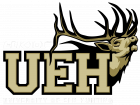
MODULE 16 - HUNTING ROOSEVELT ELK
CHAPTER 2: A SLAP IN THE FACE

THE TERRAIN
When it comes to typical habitat for Roosevelt Elk, we probably all imagine the coastal rainforests – thick walls of inpentrable brush, thorns, old-growth canopies, and salmon berries thickets that seem to never end. And, for the most part, that is the typical coastal Roosevelt elk terrain. But, there are a few other terrain features Roosevelt Elk like to utilize, and having an understanding of all of these habitats as well as why they are important will definitely help you find Roosevelt elk on a more consistent basis.
HUNTING ELK IN A RAIN FOREST
First off, the typical, thick terrain of Roosevelt Elk country often provides all the food, water, and security the Elk need in a very small area. Due to this, they are not required to travel very far at all. In fact, a Roosevelt bull will often not need to travel outside of a small “drainage”, other than when he might leave his sanctuary in search of cows during the rut. A typical Rocky Mountain elk might travel 2-3 miles each day to go from food sources to bedding areas, but a Roosevelt Elk will sometimes travel less than 200 yards. Even when these elk get bumped, they will often be able to find secure cover just 300-400 yards away, and will feel no need to vacate the area, often returning right back to the same bedding areas within a few hours.
This terrain can make remote scouting incredibly challenging, as everything on the coast looks like a north-facing slope! Feed is abundant, and water is, well, everywhere! Using Google Earth to locate feed, water, and bedding areas can be less effective for Roosevelt Elk than it is for Rocky Mountain Elk. However, in a couple of paragraphs, I’ll mention one feature that can be located using Google Earth than could prove to be very valuable.
While the thought of hunting elk that don’t travel very far is appealing at first thought, it becomes quickly apparent that finding these little pockets of elk requires much more travel by the hunter. Rather than hearing bulls bugling in multiple drainages as a Rocky Mountain elk hunter might grow accustomed to, a Roosevelt Elk hunter might hike several miles to hear just one bugle, and possible see very little sign from other elk during these hikes.
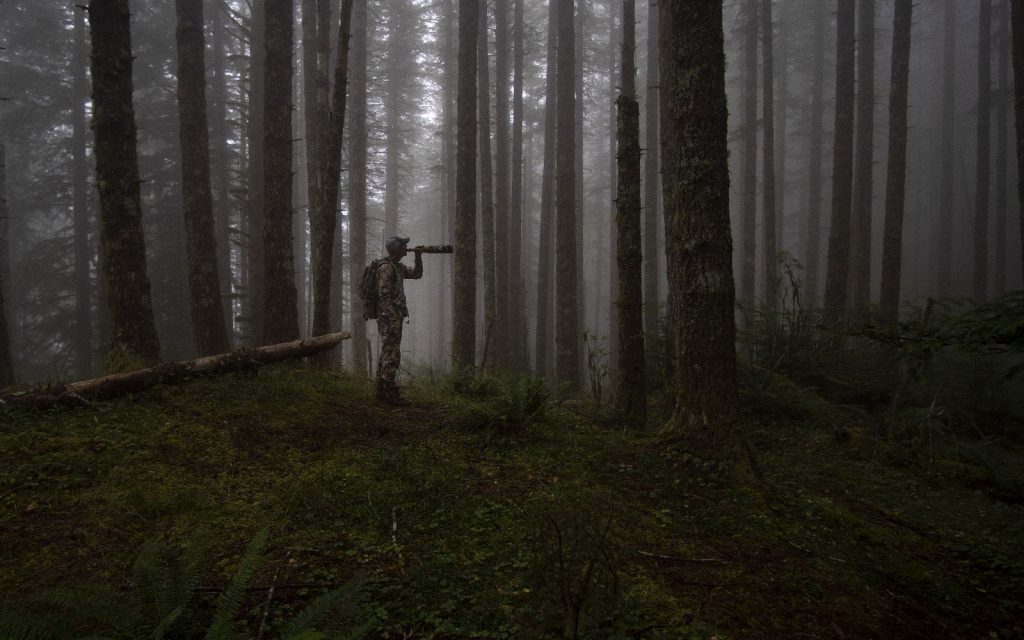
And speaking of hearing bugles, that is another complexity that is introduced by the thick vegetation. Roosevelt Elk bugles will often be “swallowed up” by the thick terrain, and the sound of your bugles – as well as the bugles of the elk – won’t carry nearly as far. That means you’ll often need to be closer, sometimes much closer, to be able to get a response (or to hear a response). It also means that when you do hear a response, it can be much more difficult to pinpoint exactly where it is coming from or how far away it really is. Most times, it’s going to be much closer than you think!
Let me back up just slightly and touch on my comment about needing to hike several miles to hear a single bugle. Hiking in this country is not like hiking in open or timbered country.
While a 10-12 mile day is not uncommon for me while elk hunting in Idaho or Wyoming, 10-12 miles in the coastal rain forest will wear you out. Period. Fighting through a tangle of impenetrable brush for hours will often leave you just 800 yards away from where you started. Add in the daily moisture that you’ll likely experience that seems to collect by the gallons on the thick brush, and you can begin to understand that covering a lot of country in this terrain can be difficult and uncomfortable to say the least. And at the end of most days, you will be battered, bruised, broken and bleeding, as everything seems to grab, slap, and assault you as you push on through the tangled vegetation that conceals these coastal giants.
Now, it’s important to point out that not all Roosevelt Elk country is this thick, miserable brush. While it is true that much of it is, there are two other keys habitats that make up Roosevelt Elk country. They are old-growth timber and clear-cuts.
OLD GROWTH TIMBER
Inter-mixed throughout the blanket of thorn-riddled brush are tracts of old-growth timber where the canopy overhead completely blocks the sunlight from ever reaching the forest floor. Shooting lanes open up, and you will feel like you are hunting on the set of a ‘Lord of the Rings’ movie! This was some of my favorite Roosevelt country to hunt, simply due to the stunning beauty and contrast of the black forest to the brilliant green ferns and moss. However, due to the lack of sunlight in many of these areas, much of this habitat is actually “sterile”, and devoid of much usable forage, and often, devoid of elk as well.
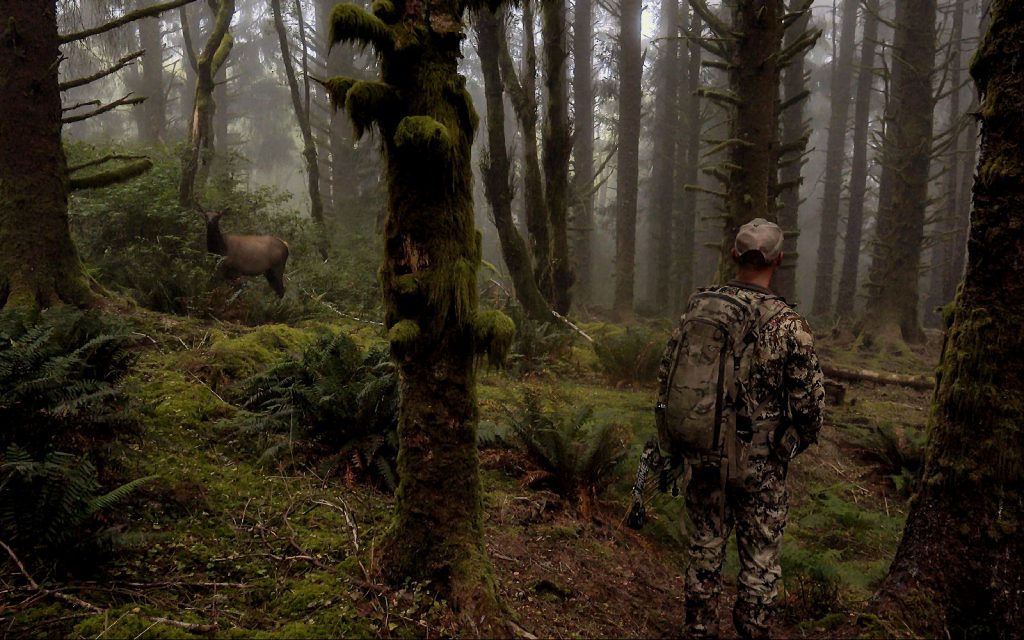
While it can be absolutely stunning – especially the first time you hunt in such areas – you will often not find more than a couple of killer photo opportunities in these areas. However, the elk will use these areas for travel, and they are definitely the easiest places for hunters to travel when pursuing elk as well!
CLEAR-CUTS
The other habitat that Roosevelt Elk country is comprised of consists of clear-cuts (or “cuts”), where timber companies have logged large swaths of timber. This logging actually creates some of the best feed for elk, as it opens up the century-old canopy and allows the sun to penetrate to the ground, providing incredible grass and brush for the elk to feed on. Elk will often spend the nights feeding in these clear-cuts, and then retreat to a thick area of brush or “re-prod” to spend the day.
Re-prod (or reproduction areas) are clear-cuts where the timber companies have replanted trees after logging operations. These trees are planted VERY close together, and after 15-20 years, become a nearly impenetrable fortress for elk to retreat to for bedding and security.
However, much of the land owned by the timber companies is often off-limits to hunting, unless you first apply for (or purchase) an access permit from the timber companies. Having – and using – OnXMaps is vital if you are hunting near these tracts of private timber company land. If you do end up hunting on these properties, understand that there may be restrictions on hunting dates, access, camping, operating motorized vehicles, etc.
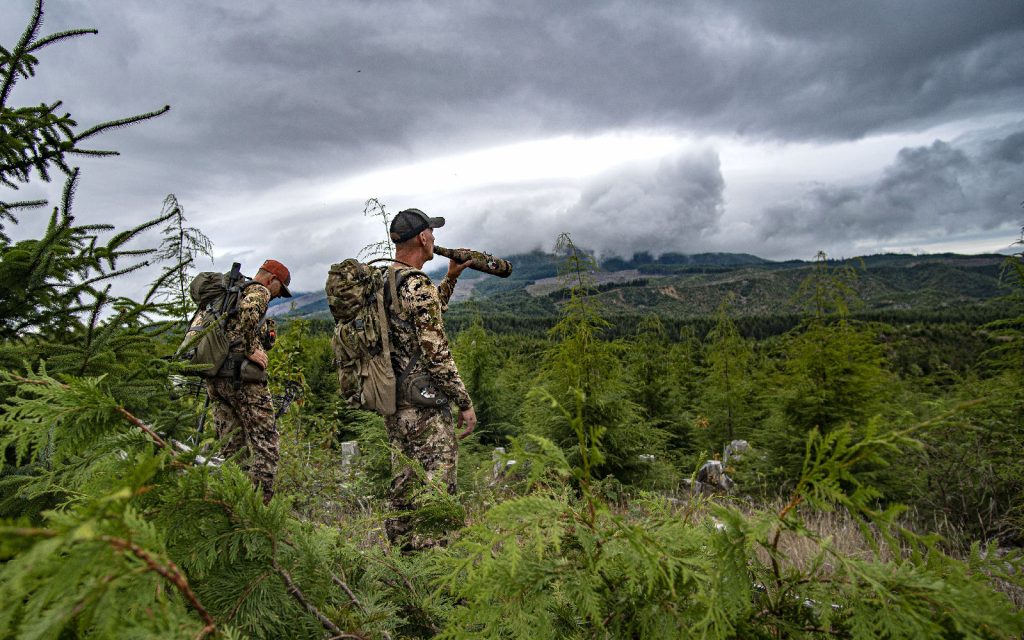
Good Roosevelt Elk country is often made up of a combination of these habitats, and finding areas that provide a good mixture of all 3 (brush, old-growth, and cuts) can be valuable. The elk are able to feed in the open cuts, then retreat into the thick re-prod or brush to find security. This is where Google Earth can become a valuable tool for Roosevelt Elk hunting. Rather than using Google Earth to located feed, water, and bedding areas, you might find it more effective to locate logging areas where the elk can find abundant feed adjacent to thick brush or re-prod where they can easily retreat to bed down or escape danger.
The fact that Roosevelt Elk don’t often travel very far often makes it seem like the density of elk is far lower than what is generally found when hunting Rocky Mountain Elk. I’m not sure if that’s actually the case or not, but we definitely covered a lot more country without seeing much sign or finding many elk. Once you do locate elk, however, they will likely be there day after day, and season after season.
A CHALLENGING LANDSCAPE
Aside from the sheer thickness of the vegetation found in the majority of Roosevelt elk country, there are a couple additional challenges the habitat provides. First, shooting lanes are few and far between. You will often be within 20 yards – or even 8 yards – of a Roosevelt Elk, and never even catch a glimpse of them.
If you watched our 2018 Destination Elk video series on the Elk101 YouTube channel, you’ll likely remember the bull we called in on the last evening of the hunt that came in to 6 yards, but never even provided a flash of himself in the thick ferns and brush.
Here is the Episode from Destination Elk I referenced:
It is vital to find the best possible shooting lanes before you decide to set up. And don’t be picky! If you can see 20 yards, you have found a GREAT shooting lane!
Another factor created by the thick brush is noise. It’s virtually impossible to move through these walls of brush without making a lot of noise. Fortunately, Roosevelt Elk typically make quite a bit of noise as they move through it as well, so as long as you keep your noise natural, it usually isn’t an issue. Often times, a bull will comes sneaking in to your calls silently, but even in some of the more “open” terrain, will give himself away by breaking a branch or pushing through a wall of brush. It’s important to listen intently when you are set up, especially if you know an elk is in the area.
However, be aware that the elk also use this to their advantage, and if you are trying to work in on a bull, he may be holding tight, listening for you to approach as well. From my previous experiences hunting Rocky Mountain Elk, I would have said it would be incredibly hard in these thick, brushy areas to be able to move in on the elk. And I would have definitely recommended that an elk hunter rely on calling the elk in to you once you find a suitable setup. However, my experience hunting with Shannon Mobbs in 2019 opened my mind to the fact that you can almost walk right up on these bulls in the thick brush. I’ll provide more details on this in Chapter 3 as I share some tactics for hunting Roosevelt elk.
YOU WILL EXPERIENCE MOISTURE
Moisture is another challenge that must be factored into your Roosevelt Elk hunting plans. Everything on the coast is wet. And you will be wet. Get used to it, and be prepared for it. We didn’t actually wear rain gear during our archery hunt there in early September, as we were able to dry our gear and clothing out each night at camp. Had we not had that luxury, rain gear would have likely been essential. The one item that did have a large impact on our comfort in this wet vegetation was a good pair of gaiters. While our tops and pants were generally wet every day, the gaiters kept our boots from getting wet, so our feet stayed dry. I can deal with wet base layers and pants, but wet socks and boots are no fun!
There isn’t much more unpleasant than being on all fours, crawling through a tangle of brush after an all-night rain, and having gallons of water run off the brush and straight down your back….multiple times and on multiple days! And even when it doesn’t actually rain, the condensation from the ocean collects on the leaves and brush, and will drip out of the trees most of the morning until the fog burns off, creating the same effect as a steady rain – both in terms of noise and discomfort.
Speaking of gear, you can probably leave your binoculars in the truck. Unless you are hunting a clear-cut where you can actually glass a couple hundred yards, most of the time they will be no more than an unnecessary weight to carry around in the thick brush.
RELEARNING THERMALS
The last challenging factor I will mention is the thermals. I have grown accustomed to hunting for elk with a knowledge of consistent diurnal thermals (be sure to read the section thermals). When hunting the Rocky Mountain states for elk, my plan is centered around consistent thermals - a morning approach from below or a mid-day approach from above, etc. However, when you are hunting the coastal ranges, thermals are not that simple. In fact, on some days, there will be no thermals at all.
Instead of relying on a consistent diurnal thermal, on some days you’ll be blessed with a steady ocean wind, that may blow straight up the mountain all day long. On these days, you’re approach to a particular hunting area will need to be modified or completely scrapped to ensure your scent isn’t blowing straight to the elk. When you are hunting Roosevelt elk on the coast, you’ll deal with standard thermals some days, but you will also have days where you’ll deal with coastal winds. Be prepared to deal with both, and adapt as needed.
OK, if you’re still with me at this point, you are a glutton for punishment, and a perfect candidate for Roosevelt Elk Hunting! Now let’s jump in to a few specifics relative to hunting Roosevelt Elk…
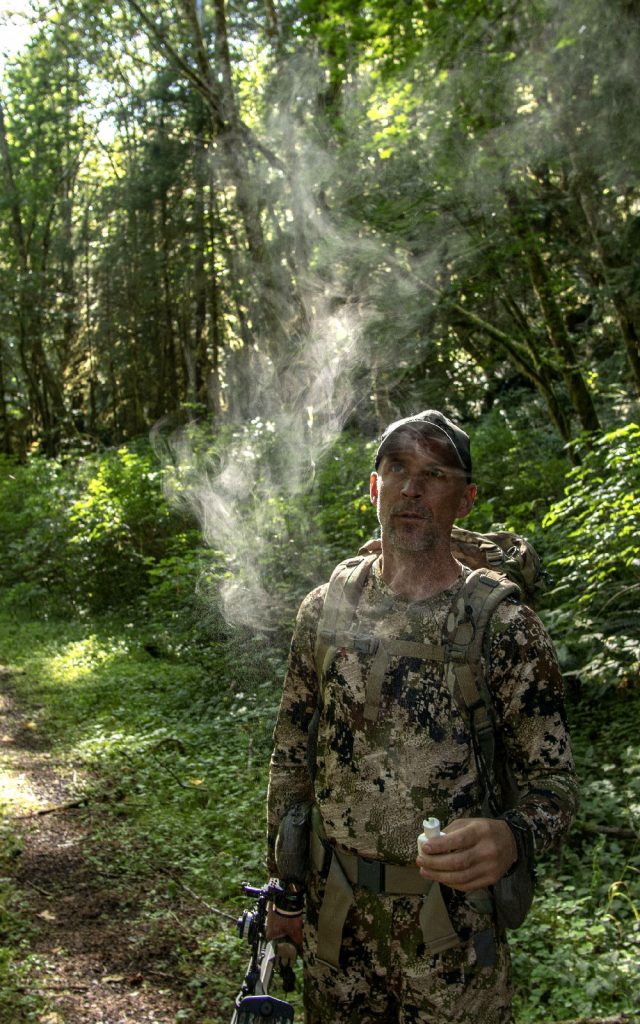
Click ‘Next Chapter’ Below to Continue to Chapter 3: Tactics for Hunting Roosevelt Elk





